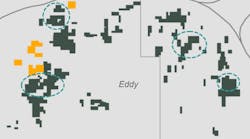SINGAPORE�The Singapore power industry this year is expecting two major developments: Singapore power stations will be gradually sold off to private investors, and consumers�not just the power generators�will have a say in how much they pay for electricity.
Sources said under an industry review, expected to be completed soon, the first "bang" will come April 1, when a revised electricity pooling system will be launched.
This will open up the Singapore electricity pool to more players, including more buyers. The current pooling system limits bidding to the power generating companies. They submit bids on the quantity and price of electricity they are able to supply to the Singapore electricity pool, with Singapore Power's PowerSupply being the only buyer.
But come April, the pooling system will be opened up to more buyers, including at least three new electricity supply companies recently set up by Keppel Fels, a unit of Keppel FELS Energy & Infrastructure Ltd.; Tuas Power; and SembCorp Industries. These new supply companies are understood to have begun negotiating contracts with big consumers (requiring 20,000 kw-hr/month of electricity or more) such as oil companies, petrochemical plants, and commercial buyers.
The new pooling system will allow new players to submit bids for how much electricity they want and how much they wish to pay. The increased competition should result in lower rates for consumers, experts say. It is going to be very exciting, according to one industry official, although he cautioned there may be some teething problems.
With more suppliers, benefits of electricity liberalization are expected to trickle down to small consumers who can negotiate for their electricity requirements on a group basis, he said. Early indications suggest competition to supply household customers will be allowed in 2002.
Next milestone
This year's next milestone will come in July or just after, sources said, when the Singapore government is likely to start selling power stations currently grouped under three companies�PowerSeraya, PowerSenoko, and Tuas Power�each with 2,000-3,000 Mw in electricity generating capacity. Together with cogenerators such as SembCorp's and ExxonMobil Corp. and the government's incinerator plants, they serve Singapore's current electricity demand of 5,000 Mw.
The divestment news is significant because there has been no word since March 1999 when the government delayed selling Singapore's newest power station, Tuas Power, to private bidders. The government attributed the delay to changes to be made to Singapore's electricity industry. It also announced Singapore Power's two power generation companies�PowerSeraya and PowerSenoko�would be transferred to parent Temasek in 2001. Temasek was also to be involved in decisions concerning the sale of Tuas Power.
Separated from the Singapore Public Utilities Board in 1995, Tuas Power is currently competing with the two Singapore Power units in selling electricity to the Singapore electricity pool.
Market sources speculate Temasek is likely to divest at least one of the power generating companies in the third quarter. The sale is expected to attract both local and Singapore corporations. Three Singapore-US consortia who previously expressed interest in buying Tuas Power were Keppel Fels and CMS Generation Co., a unit of CMS Energy Corp.; SembCorp Energy and Edison Mission Energy Asia, a unit of Edison International; and United Engineers and Enron International, a unit of Enron Corp.

